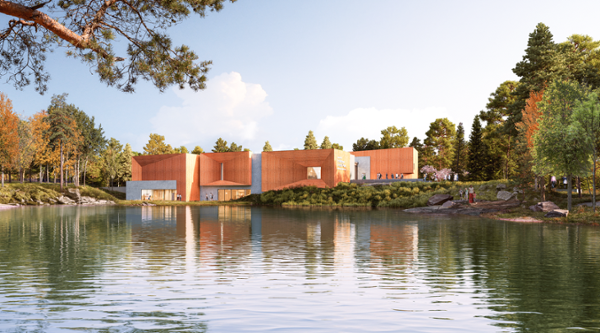Coming soon: America’s newest museum rises from ancient fossil quarry
Coming soon: America’s newest museum rises from ancient fossil quarry

From high above an active research site and fossil quarry, the newest museum in America – and the only one of its kind anywhere – will peer deep into the planet’s past with an eye on its precarious present and future.
Expected to become an international magnet to explorers of all ages, the Jean & Ric Edelman Fossil Park & Museum of Rowan University, a $75 million structure in Mantua Township, will be a place of research and exploration when it opens next spring. A grand opening is expected in April 2024.
Once complete some 65 feet above the bonebed, a direct window into the end of the Cretaceous Period, the interactive museum will be unlike any other, dubbed by Smithsonian Magazine among the “most anticipated museums” on Earth.
It will also be a place where academic research will continue into the world’s fifth mass extinction, when a massive asteroid slammed into Earth, killing off the non-avian dinosaurs and most other life, as well as one of education and exploration into what scientists call the sixth mass extinction, the human-caused climate and biodiversity crises that are now underway.
Dr. Kenneth Lacovara, a world-renowned paleontologist and founding dean of Rowan’s School of Earth & Environment, is leading construction of the Fossil Park & Museum.
Lacovara said the museum will juxtapose the contemporary with the prehistoric, taking visitors back to the age of the dinosaurs through immersive interactive exhibits, fossil hunting, natural and social experiences, and other features, while peering, optimistically, at the planet’s future.
“We’re applying technology in ways that most people have never seen to augment their experience,” Lacovara said.
Designed by ennead, one of the most celebrated architecture firms in the world, the 44,000 square foot Fossil Park Museum and grounds will feature:
- Immersive virtual reality (VR)
- Paleo sculptures by world-renowned prehistoric artist Gary Staab
- Dioramas of scenes from the prehistoric period
- A 120-seat, stadium style theater
- Opportunities for visitors to level-up through eleven layers of achievement
- A Cretaceous garden providing visitors a sense of what the landscape of the period would have been like
- Critter Cove features live animals, including a saltwater touch tank
- Café, museum store, and special events facilities
- playground created by Toronto designer Earthscape featuring a pterosaur with 45-foot wingspan
- A real fossil digging experience
- Natural trails, and more.
Designed as the largest public net zero carbon emissions site in New Jersey, the museum will be heated and cooled with green renewable energy sources. It is built with low-carbon concrete and will feature bird safe glass that appears clear to the human eye, but as spider webbed to birds so they don’t fly into it.
“There will be so many reasons to come,” Lacovara said. “Some people will come just for the VR, or for the playground, or for the food, and that’s before they even hunt for fossils. This will be a multi-day experience to take it all in.”